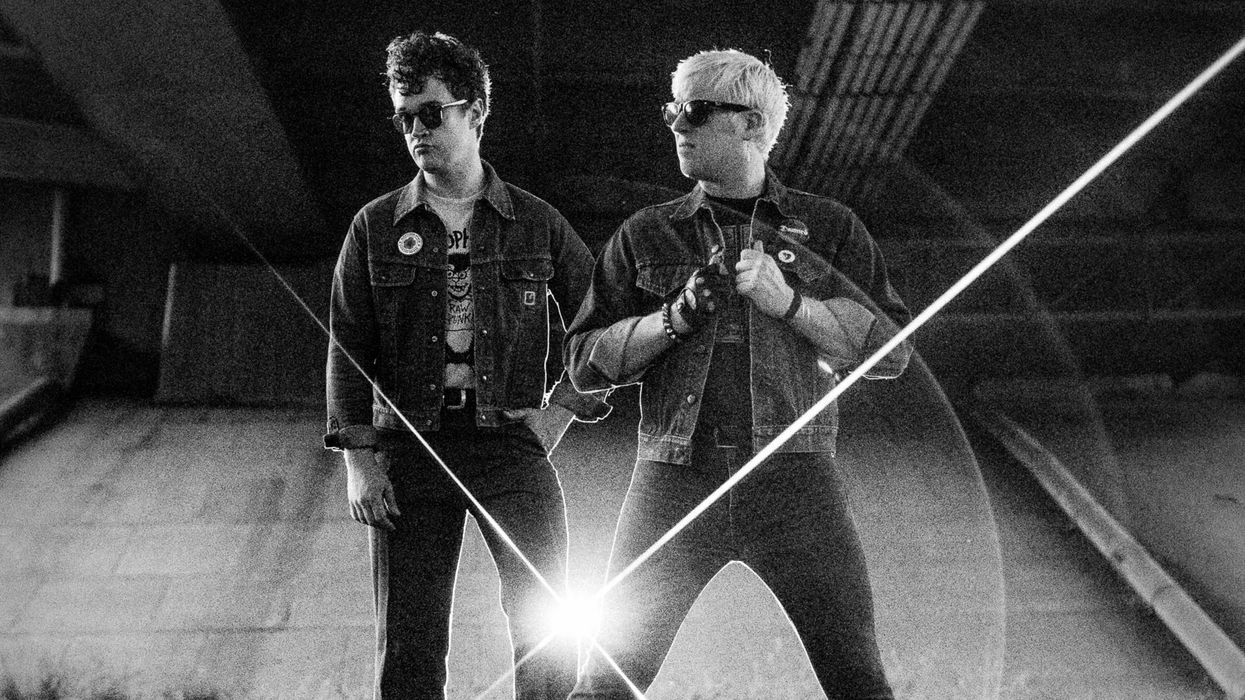Hey Zach,
Many moons ago (1987 or so), I came across this 1961 Gibson SG Special at an antiques shop in San Francisco. The poor thing had a feebly repaired headstock, a poorly set pair of humbuckers, and all paint/stain/finish removed. I paid $335 plus tax and strolled out the door feeling pretty self-satisfied. However, at home I tore it apart and realized its condition was even worse than I’d thought: Some hairball before me had routed the body to fit the HBs using a 3/8" or so drill bit.
I decided I would try to bring it back to as close to stock as I could, given the scarcity of parts at that time. I brought it to the estimable Gary Brawer in San Francisco, and he installed two Seymour Duncan P-90s, but kept the original wiring other than that for the pups. Not too long afterward, my band opened for Robin Trower in S.F. and here’s where the story takes a tragic turn. One of Robin’s roadies knocked my SG off its stand and the headstock shattered … again, and this second break was so bad that it was pretty much irreparable.
I let it sit, as I just couldn’t pony up the bucks at that time. A couple of years later, I met guitar tech Larry Cragg and told him about it. True to his word, Larry fixed it and did an amazing repair job. The only bad thing, and it’s huge to me, is that he replaced the entire headstock with some form of black resin—losing the original five-digit serial number which dated the guitar’s build to mid-March 1961.
I spoke with Gibson and they want over $2,000 to replace the neck, plus an additional $2,000, and the guitar would be brought to as close to factory as they are able to get it. Ouch. In great condition, I’ve seen a couple of these floating for about $5,000 to $11,000. But I’d not want to sell it. So the big question is simple: Is it worth it?
Thanks,
Andrew in Davis, California

Hey Andrew,
Bad news first: I don’t think you’ll be able to recoup your money on this guitar. However, that doesn’t mean you shouldn’t go ahead with a full restoration. I will explain, but first let’s talk some quick history.
As the Les Paul model became immediately popular in the early 1950s, Gibson introduced a less-expensive version in 1955 called the Les Paul Special that had a flat top, dot fretboard inlays, and two P-90 pickups. The Special was well received mainly because it cost about half the price of a Standard, but it was also significantly lighter and many players preferred the flattop feel (including Les Paul himself).
Gibson changed the body style of the Special to a rounded double-cutaway design in 1959. Later that year, Gibson changed the name to “SG Special,” and by 1961 all models had an even more modern, sharp double-cutaway design that we all know today as the SG.
Let’s look at the facts: Your guitar’s body, neck, headstock, pickups, knobs, and finish are all not original. That unfortunately doesn’t leave much left that’s from 1961. And the primary influence on what establishes value in vintage guitars is “all-original” condition. A completely refinished/refurbished guitar is worth 50 to 60 percent less than its all-original counterpart, and currently, excellent- to mint-condition 1961 Gibson SG Specials are worth between $5,500 and $6,500. If you were to have Gibson (or any other authorized/reputable repair center) restore the guitar, the most it would be worth today is between $2,200 and $3,250. So if you have over $4,300 invested in the guitar ($2,000 to replace the neck, $2,000 for the restoration, the $335 purchase price, plus the other repairs you’ve already made), you won’t be getting your money out of it anytime soon.
You have to take into consideration what this guitar is worth to you. If any guitar collector had a time machine, my guess is that he or she would likely go back to the ’50s or ’60s, stash a brand-new guitar away, and ensure it wouldn’t meet the same fate as your SG did before you bought it. There’s no going back once it was altered from all-original condition, but it sounds like this guitar means more to you than just dollars and cents. Going well north of $4,000 is a lot of money to spend on a guitar, but today it might not even get you a custom guitar that’s built exactly the way you want.
I would check with a few luthiers to see if they would be able to do the work for less. A second and third opinion is always helpful. You can’t hurt the guitar any more than it already is, so I wouldn’t be afraid to have further work done on it. You just have to figure out if this guitar is worth spending that kind of money. Given that you’ve held onto it for 30 years now, it certainly must be a treasure to you!



















